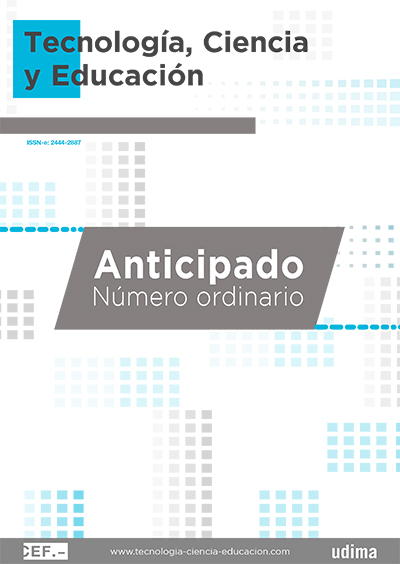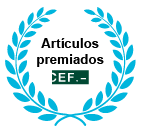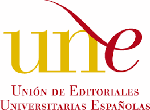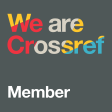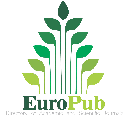Spanish as a foreign language instruction in the International Baccalaureate: the role of the application Education Perfect
DOI:
https://doi.org/10.51302/tce.2025.22483Keywords:
digital technologies, analog tools, teaching Spanish as a foreign language (SFL), authoring tools, International Baccalaureate, Singapore, secondary schoolAbstract
Nowadays, digital technologies play a fundamental role in the field of education. However, as teachers, it is important to reflect on how we can use them more meaningfully to enhance our students' (men and women) skills and foster a greater interest in learning a new language. This study aims to analyze the use of digital technologies as a teaching resource in the instruction of Spanish as a foreign language (SFL) with adolescents studying the International Baccalaureate Diploma Program at an educational institution in Singapore. First, an analysis has been conducted on the reasons why teachers have increasingly incorporated digital technologies as didactic tools in foreign language instruction, based on specialized literature. Subsequently, two didactic proposals have been implemented: one analog (control group) and one digital (experimental group), both in two 11th-grade Spanish Ab Initio classes. Finally, qualitative and quantitative scientific methods have been employed to analyze, compare, and understand the influence of digital and analog resources on the teaching and learning process of a foreign language. The results suggest that a balanced use of analog and digital tools, based on the individual preferences and needs of the students, is of vital importance to maximize the advantages of both resources in Spanish as a foreign language instruction.
Downloads
References
Aguilar Gavira, S. and Barroso Osuna, J. (2015). Data triangulation as education researching strategy. Píxel Bit. Revista de Medios y Educación, 47, 73-88.
Area Moreira, M. (2010). The process of integration and the pedagogical use of ICT in schools. Case studies. Revista de Educación, 352, 77-97. https://dialnet.unirioja.es/servlet/articulo?codigo=3219027
Area, M. and Adell, J. (2021). Digital technologies and educational change. A critical approach. REICE The Ibero-American Journal on Quality, Efficiency and Effectiveness in Education, 19(4), 83-96. https://doi.org/10.15366/reice2021.19.4.005
Arévalo-Chávez, P., Cruz-Cárdenas, J., Guevara-Maldonado, C., Palacio-Fierro, A., Bonilla-Bedoya, S., Estrella-Bastidas, A., Guadalupe-Lanas, J., Zapata-Rodríguez, M., Jadán-Guerrero, J., Arias-Flores, H. and Ramos-Galarza, C. (2020). Update on Scientific Research Methodology. Indo-American Technological University.
Arias, F. G. (2012). El proyecto de investigación. https://abacoenred.com/wp-content/uploads/2019/02/El-proyecto-de-investigaci%C3%B3n-F.G.-Arias-2012-pdf-1.pdf
Beltrán Poot, A. D., Guillermo y Guillermo, M.ª C., Martín Pavón, M. and Trejo Irigoyen, M.ª C. (2015). Educational technology: an area to be developed at a college in Southeast Mexico. Innovación Educativa, 15(69), 99-114. https://www.scielo.org.mx/scielo.php?pid=S1665-26732015000300007 andscript=sci_abstract
Castro, S., Guzmán, B. and Casado, D. (2007). Las TIC en los procesos de enseñanza y aprendizaje. Laurus, 13(23), 213-234. https://www.redalyc.org/pdf/761/76102311.pdf
Cuevas Montero, R., Huertas-Abril, C. A. and Álvarez Jurado, M. (2024). Formación en competencia digital docente: percepciones docentes del aprendizaje de español como lengua extranjera asistido por dispositivos móviles en el contexto prepandémico. Tecnología, Ciencia y Educación, 27, 91-116. https://doi.org/10.51302/tce.2024.18673
Delgado, M., Arrieta, X. and Riveros, V. (2009). Uso de las TIC en educación, una propuesta para su optimización. Omnia, 15(3), 58-77. https://www.redalyc.org/articulo.oa?id=73712297005
Díaz Barriga, F. (2008). Educación y nuevas tecnologías de la información y la comunicación: ¿hacia un paradigma educativo innovador? Revista Electrónica Sinéctica, 30, 1-15. https://www.redalyc.org/articulo.oa?id=99819167004
Durán Chinchilla, C. M., García Quintero, C. L. and Rosado Gómez, A. A. (2021). The teacher and student role in the digital age. Revista Boletín Redipe, 10(2), 287-294. https://doi.org/10.36260/rbr.v10i2.1213
Ferreira, A. (2022). La enseñanza del español como L2 y LE mediada por la tecnología. Una conversación con Anita Ferreira. En F. Trujillo, D. Cassany, C. Combe, A. Ferreira, C. Ollivier y E. Román-Mendoza, Tecnología versus/para el aprendizaje de lenguas (pp. 56-73). Difusión. https://www.researchgate.net/publication/360458427_LA_ENSENANZA_DEL_ESPANOL_COMO_LE2_Y_LE_MEDIADA_POR_LA_TECNOLOGIA
Forni, P. and Grande, P. de. (2020). Triangulation and mixed methods in contemporary social sciences. Revista Mexicana de Sociología, 82(1), 159-189.
Garau, M.ª J. (2008). Contexto y contacto en el aprendizaje de lenguas extranjeras. Revista Electrònica d’Investigació i Innovació Educativa i Socioeducativa, 1(0), 47-66. https://dialnet.unirioja.es/servlet/articulo?codigo=3011451
Hamui-Sutton, A. and Varela-Ruiz, M. (2013). Focus groups technique. Investigación en Educación Médica, 2(5), 55-60. https://doi.org/10.1016/s2007-5057(13)72683-8
Hernández Sampieri, R., Fernández Collado, C. and Baptista Lucio, P. (2014). Metodología de la investigación (6.ª ed.). McGraw-Hill. http://187.191.86.244/rceis/registro/Metodolog%C3%ADa%20de%20la%20Investigaci%C3%B3n%20SAMPIERI.pdf
International Baccalaureate. (2020). What is an IB education? https://www.ibo.org/es/benefits-of-the-ib/the-ib-teaching-style/
Juan González, P. de. (2012). Use of new technologies in the teaching of foreign languages. Revista de Lenguas para Fines Específicos, 18, 183-212. https://ojsspdc.ulpgc.es/ojs/index.php/LFE/article/view/42
Kovač, M. and Weel, A. van der. (Eds.). (2020). Lectura en papel vs. lectura en pantalla. Centro Regional para el Fomento del Libro en América Latina y el Caribe/Organización de las Naciones Unidas para la Educación, la Ciencia y la Cultura. https://cerlalc.org/wp-content/uploads/2020/04/Cerlalc_Publicaciones_Dosier_Pantalla_vs_Papel_042020.pdf
Lin, T. H.-Y. (2013). Impacts of Oral Language Proficiency, Television and Internet on Acculturation of Taiwanese College Students. ProQuest LLC. https://www.proquest.com/dissertations-theses/impacts-oral-language-proficiency-television/docview/1442847219/se-2
Martín Sánchez, M. Á. (2009). Historia de la metodología de enseñanza de lenguas extranjeras. Tejuelo, 5, 54-70. https://dialnet.unirioja.es/servlet/articulo?codigo=2983568
Mena Octavio, M. (2021). Design thinking: un enfoque educativo en el aula de segundas lenguas en la era pos-COVID. Tecnología, Ciencia y Educación, 18, 45-75. https://doi.org/10.51302/tce.2021.569
Mileva, D., Garré, A. and Rodríguez, M. (2012). Foreign language. Only a tool for communication? Invenio, 15(28), 11-17. https://dialnet.unirioja.es/servlet/articulo?codigo=4206302
Níkleva, D. K. and López Ogáyar, M. (2012). Digital competence and authoring systems as teaching tools in language teaching. Tejuelo, 13, 123-140. https://tejuelo.unex.es/article/view/2513
Ospina Rave, B. E., Sandoval, J. J., Aristizábal Botero, C. A. and Ramírez Gómez, M. C. (2005). La escala de Likert en la valoración de los conocimientos y las actitudes de los profesionales de enfermería en el cuidado de la salud. Antioquia, 2003. Investigación y Educación en Enfermería, XXIII(1), 14-29. https://www.redalyc.org/articulo.oa?id=105215401002
Pereira Pérez, Z. (2011). Mixed method designs in education research: a particular experience. Revista Electrónica Educare, 15(1), 15-29. https://doi.org/10.15359/ree.15-1.2
Pizarro Chacón, G. and Cordero Badilla, D. (2013). ICT as a technological tool for the development of language skills in second language university students. Revista Electrónica Educare, 17(3), 277-292. https://doi.org/10.15359/ree.17-3.13
Ramos Galarza, C. A. (2020). The scope of an investigation. CienciAmérica, 9(3), 1-6. https://doi.org/10.33210/ca.v9i1.264
Rekalde, I., Vizcarra, M.ª T. and Macazaga, A. M.ª (2013). Observation as a research strategy for building learning context and encouraging participatory processes. Educación XX1, 17(1), 201-220. https://doi.org/10.5944/educxx1.17.1.10711
Rodríguez Pérez, N. (2016). ¿Las TIC como mediadoras en la enseñanza-aprendizaje de lenguas extranjeras? Opción, 32(10), 569-588. https://www.redalyc.org/articulo.oa?id=31048901031
Sagredo Santos, A. (2008). Learning a foreign language through its cultural background: «Saying and doing are different things». En R. Monroy Casas y A. Sánchez Pérez (Eds.), 25 años de lingüística en España: hitos y retos. Editum. https://www.um.es/lacell/aesla/contenido/pdf/3/sagredo.pdf
Salinas Ibáñez, J. (Coord.). (2008). Innovación educativa y uso de las TIC. Universidad Internacional de Andalucía. https://recyt.fecyt.es/index.php/profesorado/article/view/42251/24198
Silveira Donaduzzi, D. S. da, Colomé Beck, C. L., Heck Weiller, T., Nunes da Silva Fernandes, M. and Viero, V. (2015). Focal group and content analysis in qualitative research. Index de Enfermería, 24(1-2), 71-75. https://doi.org/10.4321/s1132-12962015000100016
Simons, M. (2010). A didactic perspective on the use of ICT in the Spanish as a foreign language class. Marco ELE. Revista de Didáctica Español como Lengua Extranjera, 11, 1-21. https://dialnet.unirioja.es/servlet/articulo?codigo=3707965
Trujillo, F., Cassany, D., Combe, C., Ferreira, A., Ollivier, C. and Román-Mendoza, E. (2022). Tecnología versus/para el aprendizaje de lenguas. Difusión. https://difusion.com/wp-content/uploads/2022/07/whitepaper-difusion-2022.pdf
Trujillo Sáez, F., Salvadores Merino, C. and Gabarrón Pérez, Á. (2019). Technology for teaching and learning foreign languages: a literature review. RIED. Revista Iberoamericana de Educación a Distancia, 22(1), 153-169. https://doi.org/10.5944/ried.22.1.22257
Valencia-Galeano, Y. S. and Serrano-Sánchez, J. L. (2020). Learning a second language supported by digital technologies: a systematic review. Education in the Knowledge Society, 21, 1-13. https://doi.org/10.14201/eks.18734
Vargas-Murillo, G. (2020). Educational strategies and digital technology in the teaching learning process. Cuadernos Hospital de Clínicas, 61(1), 114-129. http://www.scielo.org.bo/scielo.php?script=sci_arttext andpid=S1652-67762020000100010
Veiga de Cabo, J., Fuente Díez, E. de la and Zimmermann Verdejo, M. (2008). Models of studies in applied research: concepts and criteria for design. Medicina y Seguridad del Trabajo, 54(210), 81-88. https://doi.org/10.4321/s0465-546x2008000100011
Downloads
Published
How to Cite
Issue
Section
License
Copyright (c) 2025 Daniel Padrón de los Riscos, Beatriz Lores-Gómez

This work is licensed under a Creative Commons Attribution-NonCommercial-NoDerivatives 4.0 International License.

